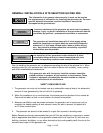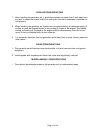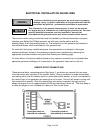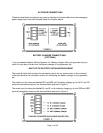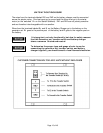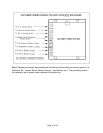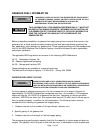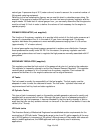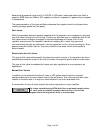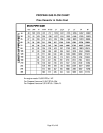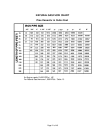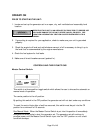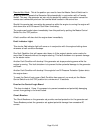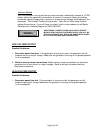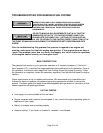
Page 19 of 45
Because tank pressures range from 0 to 200 PSI in LPG tanks, these tanks cannot be filled to
capacity. ASME tanks are filled to 90% capacity to allow for expansion of gases during increases
in temperature.
The recommendation of the local certified professional fuel supplier should be followed when
installing storage vessels and fuel piping.
Fuel valves
While the secondary demand regulator supplied with this generator set is designed to close and
stop fuel when the engine is not running, it should not be relied upon to completely seal off the
fuel system when the engine is stopped. A ruptured diaphragm or a piece of dirt in the
regulator could prevent the regulator's valves from seating with a result that gas would
continue flowing through the carburetor, into the engine and out into the surrounding air. Since
gaseous fuels are heavier than air, they tend to settle in low areas, which could present a
serious hazard.
Electric fuel shut-off valves
This type of fuel valve interfaces with the electronic control circuitry of the generator set and is
automatically activated to seal off the fuel the instant the engine's ignition system is shut down.
This type of fuel valve is mandated by federal and state regulations in most generator set
applications.
Manual Fuel Valves
In addition to the electrical fuel shut-off valve, a LPG system should include a manually
operated safety shut-off valve located close to the fuel source. This valve may well be a valve
located on the tank itself or it may be a valve installed in the fuel transmission line.
A manual shut-off valve is often required by existing regulations in many localities.
For indoor installations by NFPA definition, an automatic positive shut-
off valve must be installed to assure that the flow of fuel will be
stopped should the engine fail while it is unattended.



